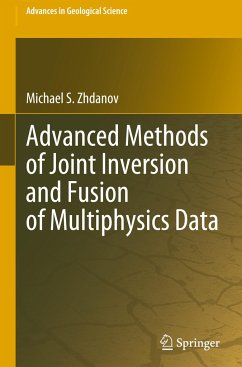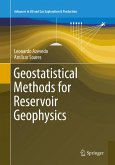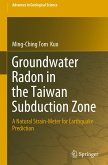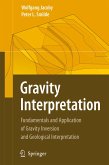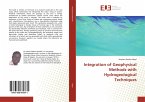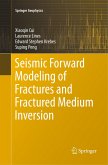Different physical or geophysical methods provide information about distinctive physical properties of the objects, e.g., rock formations and mineralization. In many cases, this information is mutually complementary, which makes it natural for consideration in a joint inversion of the multiphysics data. Inversion of the observed data for a particular experiment is subject to considerable uncertainty and ambiguity. One productive approach to reducing uncertainty is to invert several types of data jointly. Nonuniqueness can also be reduced by incorporating additional information derived from available a priori knowledge about the target to reduce the search space for the solution. This additional information can be incorporated in the form of a joint inversion of multiphysics data.
Generally established joint inversion methods, however, are inadequate for incorporating typical physical or geological complexity. For example, analytic, empirical, or statistical correlations between different physical properties may exist for only part of the model, and their specific form may be unknown. Features or structures that are present in the data of one physical method may not be present in the data generated by another physical method or may not be equally resolvable.
This book presents and illustrates several advanced, new approaches to joint inversion and data fusion, which do not require a priori knowledge of specific empirical or statistical relationships between the different model parameters or their attributes. These approaches include the following novel methods, among others: 1) the Gramian method, which enforces the correlation between different parameters; 2) joint total variation functional or joint focusing stabilizers, e.g., minimum support and minimum gradient support constraints; 3) data fusion employing a joint minimum entropy stabilizer, which yields the simplest multiphysics solution that fits the multi-modal data. In addition, the book describes the principles of using artificial intelligence (AI) in solving multiphysics inverse problems. The book also presents in detail both the mathematical principles of these advanced approaches to joint inversion of multiphysics data and successful case histories of regional-scale and deposit-scale geophysical studies to illustrate their indicated advantages.
Generally established joint inversion methods, however, are inadequate for incorporating typical physical or geological complexity. For example, analytic, empirical, or statistical correlations between different physical properties may exist for only part of the model, and their specific form may be unknown. Features or structures that are present in the data of one physical method may not be present in the data generated by another physical method or may not be equally resolvable.
This book presents and illustrates several advanced, new approaches to joint inversion and data fusion, which do not require a priori knowledge of specific empirical or statistical relationships between the different model parameters or their attributes. These approaches include the following novel methods, among others: 1) the Gramian method, which enforces the correlation between different parameters; 2) joint total variation functional or joint focusing stabilizers, e.g., minimum support and minimum gradient support constraints; 3) data fusion employing a joint minimum entropy stabilizer, which yields the simplest multiphysics solution that fits the multi-modal data. In addition, the book describes the principles of using artificial intelligence (AI) in solving multiphysics inverse problems. The book also presents in detail both the mathematical principles of these advanced approaches to joint inversion of multiphysics data and successful case histories of regional-scale and deposit-scale geophysical studies to illustrate their indicated advantages.

